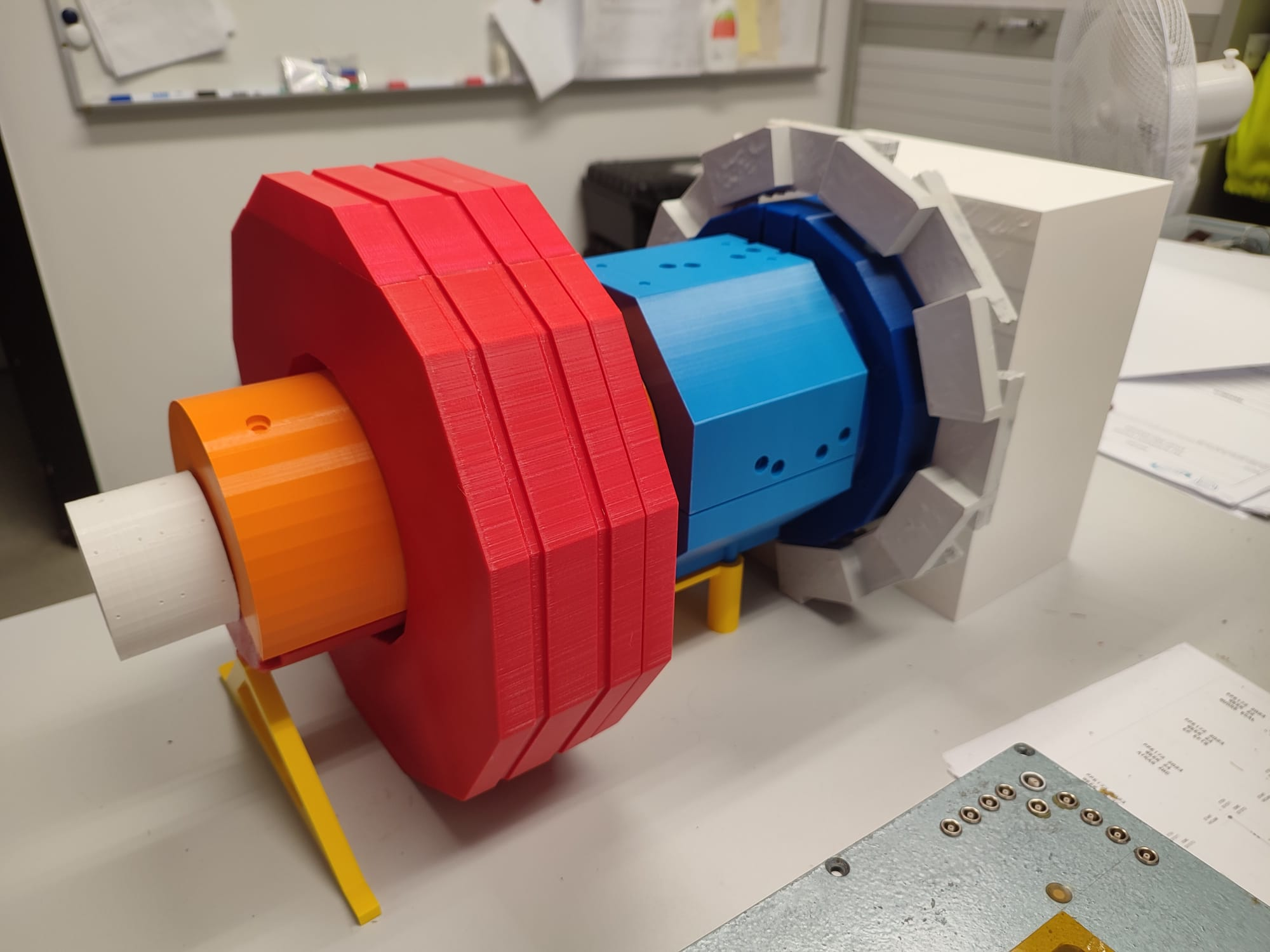Prototype profile: The South African Consortium of Air Quality Monitoring (SACAQM) AI_r system - solving the affordability problem with AI-powered IoT

The SACAQM Al_r system is an air quality monitoring, analysis and prediction system. It leverages cutting-edge air quality sensors, an efficient loT network infrastructure, and advanced artificial intelligence to create a scalable, cost-effective solution.
This technology not only captures real-time air quality data but also employs Al to forecast future air quality conditions. By integrating state-of-the-art sensors with loT and Al capabilities, the Intelligent loT Air Quality Monitoring and Prediction System is positioned to address the limitations of existing systems.
ATTRACT stories: behind the AHEAD project

AHEAD, an R&D&I project under ATTRACT phase 2, aims at providing technology bricks enabling in situ sensing, heating and energy harvesting from fluids to achieve standalone measurements and data transmission. The project seeks to validate these developments to Technology Readiness Level 7 through two specific use cases: Mechanically Pumped Loops (MPL) for space applications and CO2-based industrial refrigeration systems.
Prototype profile: Switch Support for High Pressure valves
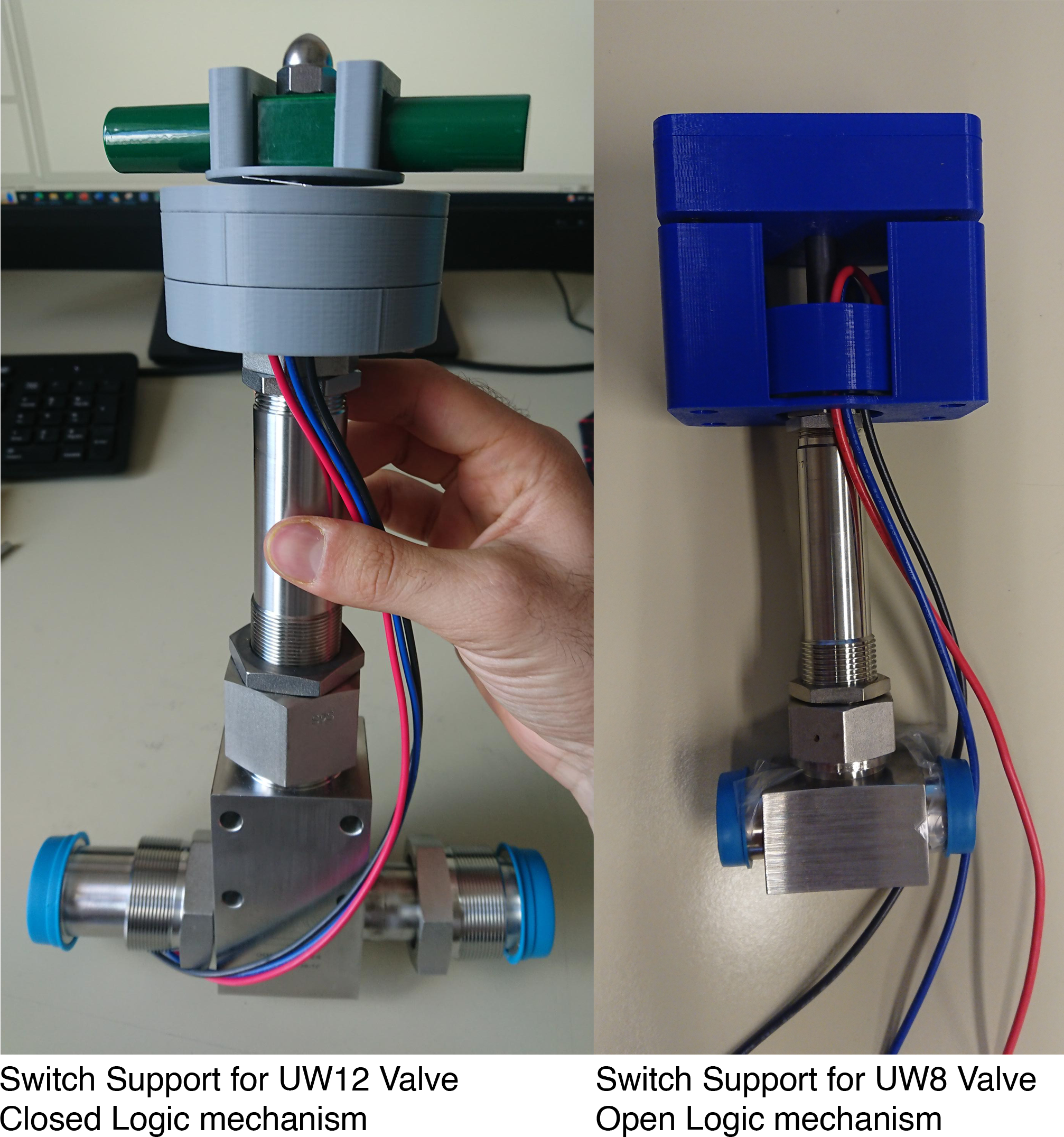
CMS and ATLAS have several cooling systems underground and on the surface with manifolds that need to be operated manually. In these manifolds, there are several high-pressure valves which are purely mechanical parts.
The aim of the switch support is to be able to install on each valve a simple switch in order to allow the monitorisation of the valve position from a SCADA platform without the need to be on-site.
CBI-FP: a decade of facing real-life societal challenges
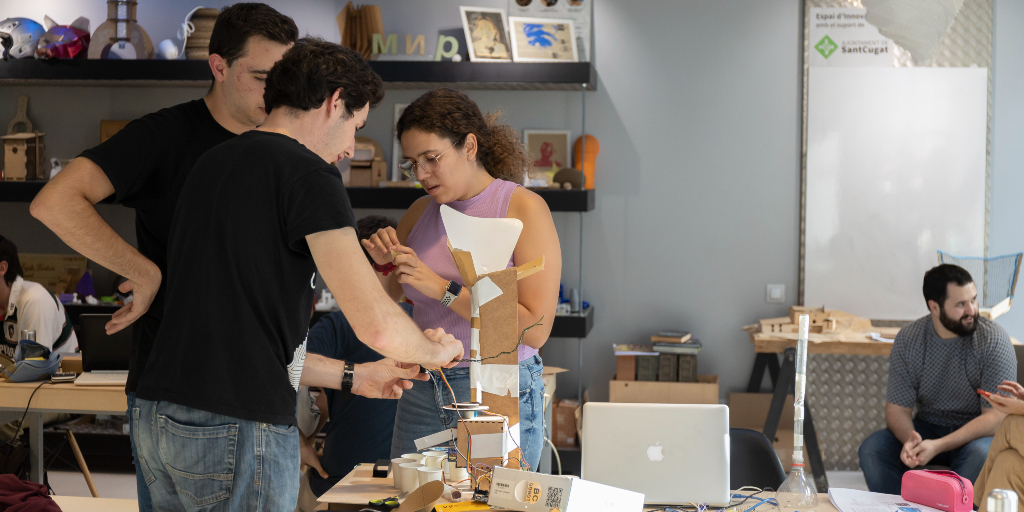
The Challenge Based Innovation programme by Fusion Point (CBI-FP) is a collaborative initiative that links research, education, and scientific expertise to address real societal challenges aligned with the United Nations Sustainable Development Goals (SDGs) using cutting-edge technologies. This year marks a decade since the initiation of CBI in Barcelona, where the program has engaged over 400 students from 20 different nationalities.
Prototype profile: Light guide development for the electromagnetic calorimeter upgrade of the LHCb experiment
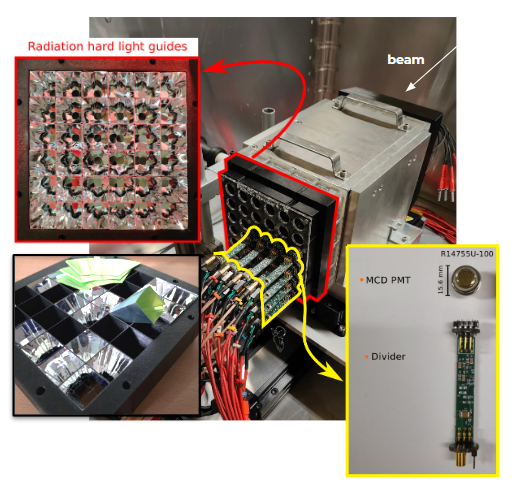
Kacper Jama and his team are focusing on the development of prototypes for the electromagnetic calorimeter (ECAL) upgrade of the LHCb experiment. For this project, many parts have been made in different laboratories, and some of them have been made here at ldeaSquare, such as the Light Guide (LG).
Re-designing a battery recollection container for CERN: when IdeaSquare alumni help with the laboratory recycling challenges
A team made up of former students of IdeaSquare worked on a surprising challenge: re-designing a battery recollection container for CERN. The project recently completed the prototype validation phase and is entering production.
 A team made up of former students of IdeaSquare worked on a surprising challenge: re-designing a battery recollection container for CERN. The project recently completed the prototype validation phase and is entering production.
A team made up of former students of IdeaSquare worked on a surprising challenge: re-designing a battery recollection container for CERN. The project recently completed the prototype validation phase and is entering production.
Prototype profile: LHC Vlead Tester Box
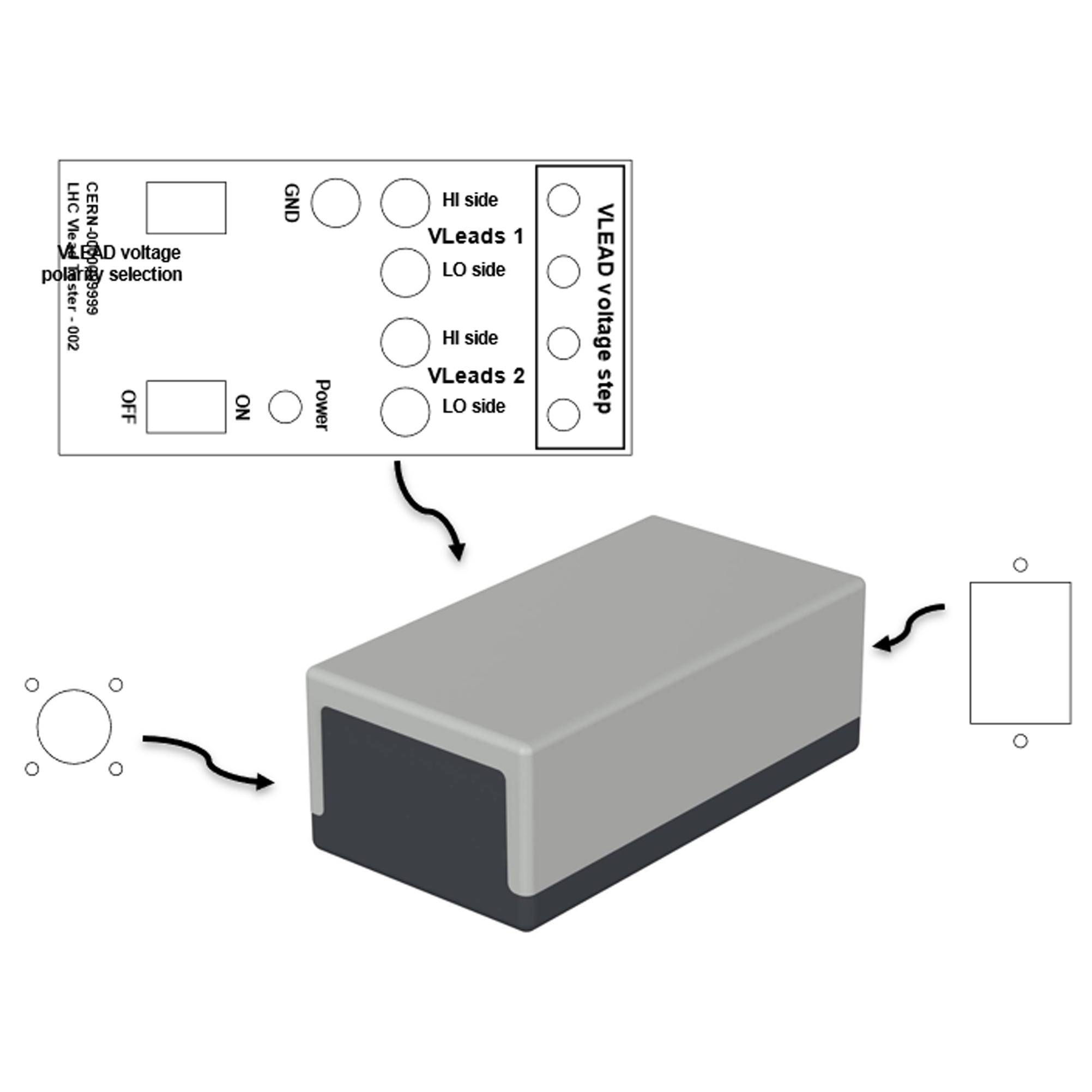
The box, called "LHC Vlead Tester", will be used to test power converters which supply current to superconducting magnets.
Because superconducting magnets are cooled to cryogenic temperatures there is a device called "current lead" that enables the connection of room-temperature conductors to cryogenic conductors. These current leads are critical devices, therefore the voltage across them is monitored by the power converter which will shut down if a certain voltage threshold is reached.
Prototype profile: Design and validation of a safe mechatronic system for the handling of radioactive sources

The LHC tunnel is a highly radioactive environment during the operation of the machine.
Four thousand Beam Loss Monitors (BLMs) are placed along the magnets to ensure no radiation escape. It is essential to verify the proper operation of each of these BLMs before operation to ensure safety.
Prototype profile: 3D printed base for Cryogenics CHARM radiation campaign
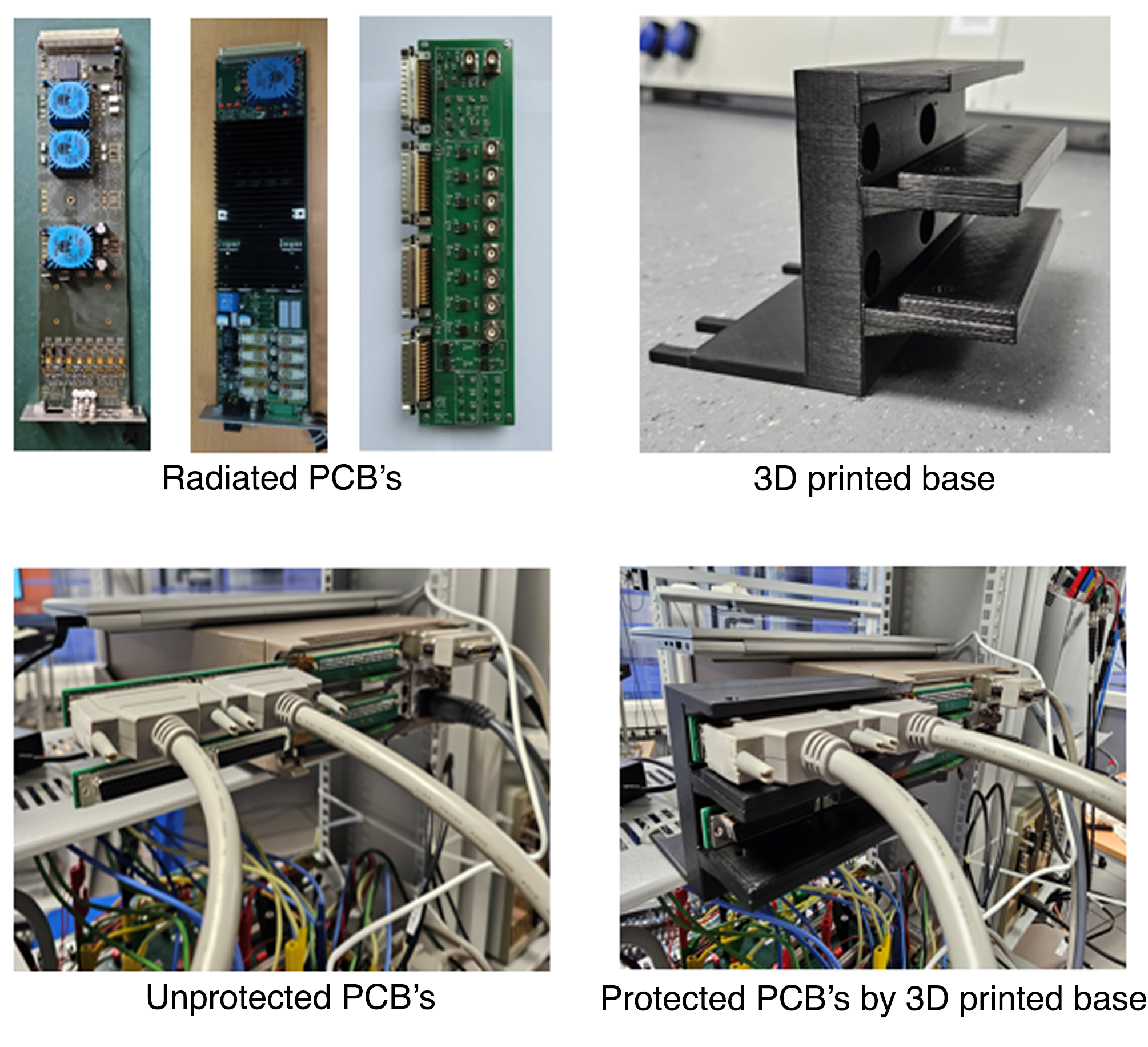
The latest TE-CRG-IC radiation campaign took place during August-September 2023, in CHARM (CERN High energy AcceleRator Mixed field/facility).
Automated tests were running for three weeks, every three hours, sending and receiving signals from the radiated components.
Pagination
- Previous page
- Page 2
- Next page
